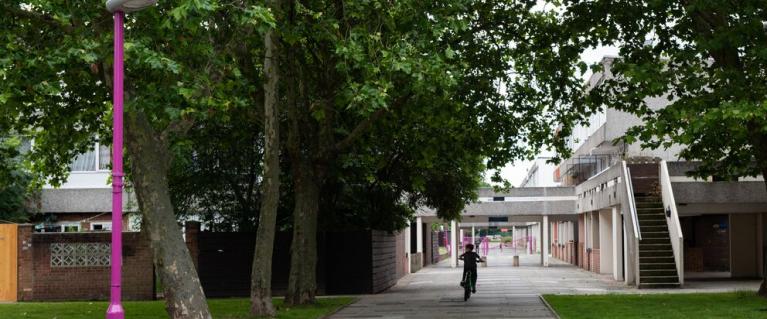
CLEVER Cities: Thamesmead
The Mayor of London, Sadiq Khan wants to make London one the greenest global cities. This means finding new ways of improving and enhancing London’s green infrastructure and engaging Londoners in the process.
CLEVER Cities was a European-funded project that trialled working with local citizens to ‘co-design’ the regeneration of urban areas to make them greener and healthier. London was chosen as one of three lead cities along with Hamburg and Milan. The London project was a partnership between the Mayor of London, Peabody, Groundwork London and Social Finance.
Nature-based solutions
The project used ‘nature-based solutions’ to address local urban challenges in Thamesmead, South East London. This meant using landscape, planting and nature to help regenerate an area to provide environmental, social and economic benefits. It included traditional features like parks and green spaces, as well as ‘urban greening’ like rain gardens and street trees. Nature-based solutions must be planned, designed and managed to optimise the benefits they provide to people as well as the local environment.
Thamesmead
Thamesmead has a community of over 45,000 people and a large network of green spaces, lakes and canals surrounding its flats and houses.
The estate was built in the 1960s on a floodplain of the river Thames. To guard against the risk of extensive tidal flooding, the estate’s lakes and canals are designed hold flood water. But over the years, the lakes and green spaces became underused due to poor access routes and orientation. The vast blank green spaces were not multifunctional and did not provide much of interest to engage residents.
The overall goal of the CLEVER cities project was to demonstrate that by working collaboratively with both technical experts and local people we could design greener, happier and healthier cities.
Making Space for Nature
As part of CLEVER cities, a campaign called ‘Making Space for Nature’ engaged with local citizens in Thamesmead through three strands:
- Community activation: to motivate people to be more active citizens – for example, volunteering, joining a community forum or just participating at drop-in design events.
- Community co-creation: to create public spaces that are better used and valued by the people who live there. The project embedded a co-creation process into the redesign of the public realm in South Thamesmead, meaning new governance models to devolve decision-making and evaluate the benefits of the co-design process.
- Community skills and education: to inspire future designers and horticulturists. As a legacy of CLEVER Cities, the project will continue to work with Tump 53, local children and residents to engage with the natural environment, and provide design and green skills training.
Lessons learned
As well as making Thamesmead a better place to live, the lessons learned from CLEVER Cities will influence future regeneration projects across London, especially in Opportunity Areas.
Need a document on this page in an accessible format?
If you use assistive technology (such as a screen reader) and need a version of a PDF or other document on this page in a more accessible format, please get in touch via our online form and tell us which format you need.
It will also help us if you tell us which assistive technology you use. We’ll consider your request and get back to you in 5 working days.